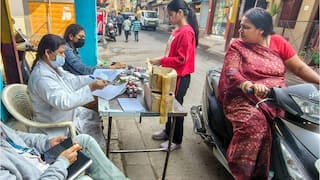Explorer
Gwalior, Allahabad more polluted now than Delhi

New Delhi: Delhi is no more the world's most polluted city. Gwalior, Allahabad, Patna and Raipur have overtaken Delhi in the latest World Health Organisation (WHO) report released on Thursday. Delhi is at the 11th spot among the 20 most polluted cities, with the PM 2.5 level recorded at 122. Ten of the 20 cities are in India. Tiny particulate matter less than 2.5 micrometers in size are known as PM 2.5. These are thought to be most deadly as they can find their way deep in the person's lungs. Next in the updated WHO list are Gwalior and Allahabad (India), Riyadh and Al Jubail (Saudi Arabia), Patna and Raipur (India), Bamenda (Cameroon), Xintagi and Baoding (China) and Delhi and Ludhiana (India). Gwalior's PM 2.5 level is 176, followed by Allahabad (170), Patna (149), Raipur (144), Ludhiana (122), Kanpur (115), Khanna (114), Firozabad (113) and Lucknow (113). Topping the list is Zabol in Iran (217). Peshawar in Pakistan is at the 20th spot (111). Despite the dismal Indian standing, the sole consolation was that the number of Indian cities in the list of the world's 20 most polluted cities had come down to 10 from 13 in 2014. Poonam Khetrapal Singh, the WHO regional director for Southeast Asia, said in a statement that increasing air pollution levels were putting the health of billions of people at risk. "We have overwhelming evidence of the impact of air pollution on stroke, heart disease, lung cancer and chronic and acute respiratory diseases," Singh said. WHO said that while all regions of the world were affected, populations in low-income cities were the most impacted. As per WHO, 98 percent of cities in low- and middle income countries with more than 100,000 inhabitants do not meet WHO air quality guidelines. In high-income countries, that percentage falls to 56 percent. The Centre for Science and Environment (CSE) welcomed the fact that fewer Indian cities were in the list of top 10 and top 20 most polluted cities this year. But it voiced concern that several smaller Indian cities including Patna, Allahabad, Ludhiana, Gwalior, and Kanpur were more polluted than mega cities and the situation was getting worse "This indicates air pollution is now a national crisis and needs strict and aggressive nation-wide action across all cities of India," CSE executive director Anumita Roychowdhury said. Greenpeace India added: "Air pollution is a national crisis and demands a concerted national action plan in response." The latest WHO database covered 3,000 cities in 103 countries. Flavia Bustreo, the WHO assistant-director general, said in a statement: "Air pollution is a major cause of disease and death. It is good news that more cities are stepping up to monitor air quality." Overall, the report said global urban air pollution levels increased by 8 percent despite improvements in some regions.
Related Video
Indore Water Crisis: Contaminated Supply Causes Deaths, Authorities Face Severe Negligence Questions
Follow Breaking News on ABP Live for more latest stories and trending topics. Watch breaking news and top headlines online on ABP News LIVE TV

Nayanima Basu
Opinion




































